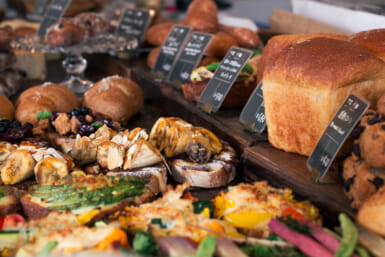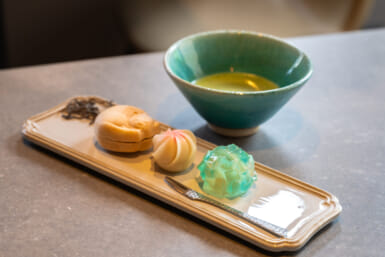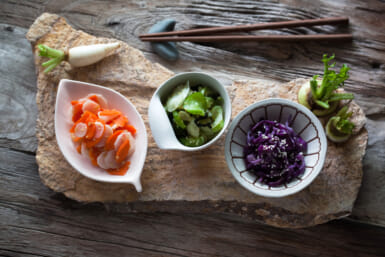Since being established in 2014, Minimal (stylized as Minimal -Bean to Bar Chocolate-) has firmly cemented itself as one of the leading chocolate brands of the Japanese bean-to-bar scene. We sat down with its founder, Takatsugu Yamashita, to talk about the ins and outs of the chocolate-making business.
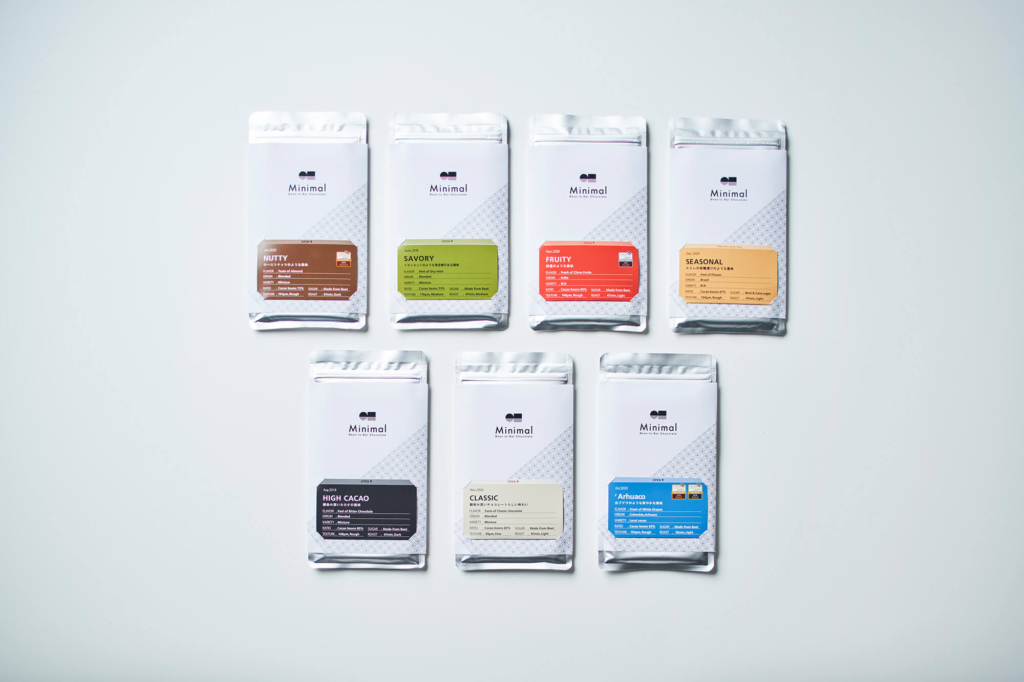
Minimal by Name, Minimal by Nature
At first, Minimal stands out from the rest because of its branding, which makes it recognizable thanks to the abstract logo symbolizing a cacao bean and bar, and minimalist packaging that sticks to monochromatic color schemes and simple shapes. This stripped-back approach to design epitomizes one of the Shibuya-based brand’s core values: subtraction.
Minimal prides itself on taking a distinctly washoku approach to making chocolate — highlighting subtleties in taste, by using as few ingredients as possible. All its chocolate bars are fully vegan, using only cocoa beans and non-refined sugar. The only difference between many of its bars is the type of cocoa bean used.
“We regard the flavor of the original cacao bean as incredibly important,” Yamashita tells us.
There are 39 different flavor notes used for the Minimal chocolate bars, and chocolatiers must be able to ascertain the difference between each one, a process known in the company as “tasting.” Every member of staff goes through six months of training to be able to differentiate one cacao type from the other. “If chocolatiers can’t do this, then they can’t make the chocolate,” says Yamashita.
Every day the Minimal team makes one or two batches of raw chocolate: sorting, grinding and tempering the beans. Each bar is single origin, with batches from the same bean made together to avoid inconsistencies. The slightest change can make a big difference in taste, which chocolatiers monitor throughout the making process.
Minimal staff are passionate about raising awareness of the concept of bean-to-bar. In its small factory-café in Tomigaya (the company has since expanded to include a café in Yoyogi), staff members take the opportunity to share the concept with customers.
”Recently, we’ve noticed that customers are starting to become more aware of bean-to-bar chocolate,” states Yamashita. Much like a specialty coffee shop, there are cards with explanations of the beans used, given out with each bar bought.
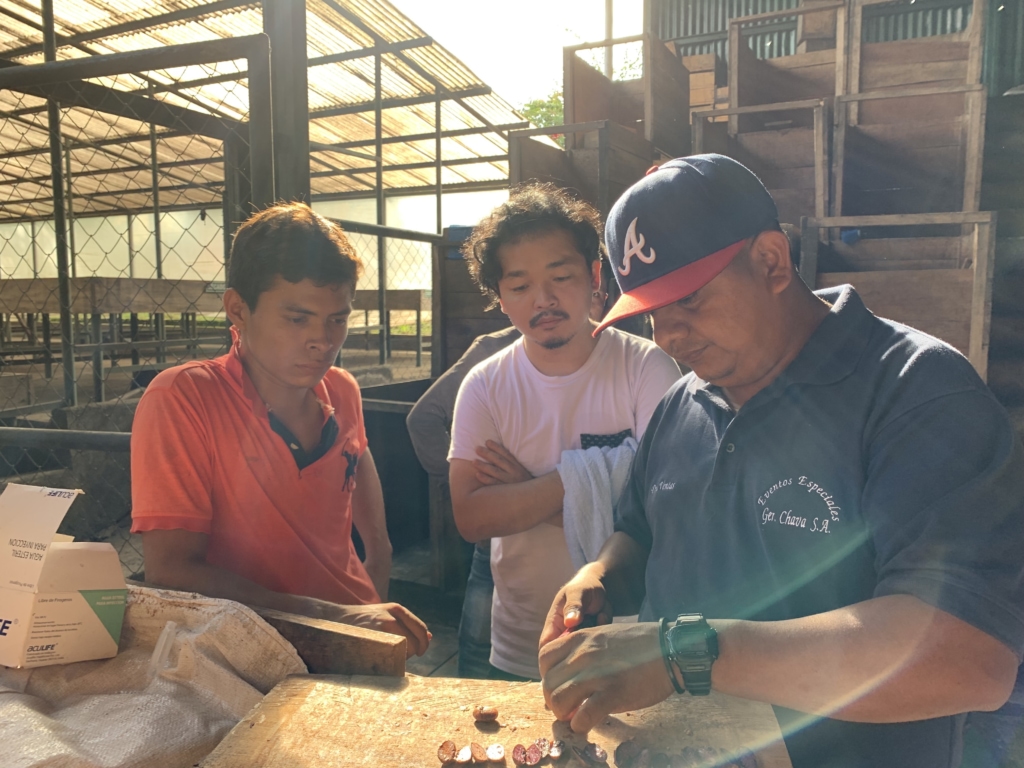
Fairer Trade
On the website, the company states that it ensures its farmers receive a fair price for their beans, but this is not expanded on. We are curious to find out exactly how it does this. Yamashita comes alive as he talks about the ins and outs of fair pricing and the Minimal pricing system, which comes in 10 different price rankings. The lowest is over 30 percent more than the standard fair-trade price ($2.34). However, he adds, that the company normally pays more. The average it bought at last year was $6.67, over double the fair-trade price.
Tasting training comes into play as Minimal assigns a ranking to each cacao batch. The ability to taste the difference between 39 varieties informs the team which beans are of higher- or lower-rank. Yamashita talks about the pricing of the Minimal chocolate compared to the ¥100 varieties at convenience stores. Not only are customers paying for taste, they are also paying a fair price.

Making the Most of the Best Ingredients
Everything Minimal uses is of the highest quality available, something which is especially important when it comes to desserts, which require ingredients that the firm can’t make itself.
Staff members receive proper training in all fields of the shop and workshop. Yamashita mentions that many have been in the business for over 10 years. This long experience comes in handy when using external ingredients such as the strawberries in its gateau chocolat for this year’s Valentine’s Day. “The most popular event of the year, followed by Christmas and White Day, I reckon,” says Yamashita. “We go all out to find the best.”
From August, development for the next Valentine’s Day begins, by deciding on a flavor or ingredient. Staff members use their contacts in the industry to source high quality ingredients. The strawberries in the gateau chocolat come from a farm in Kagawa Prefecture, a contact of one of the pâtissiers.
“Coming across great ingredients means inspiration just springs up,” says Minimal’s founder.
The gateau chocolat is a returner from last year, but Tokyo Weekender is keen to find out what the most popular dessert is. “It has to be the strawberry raw gateau chocolat,” answers Yamashita.
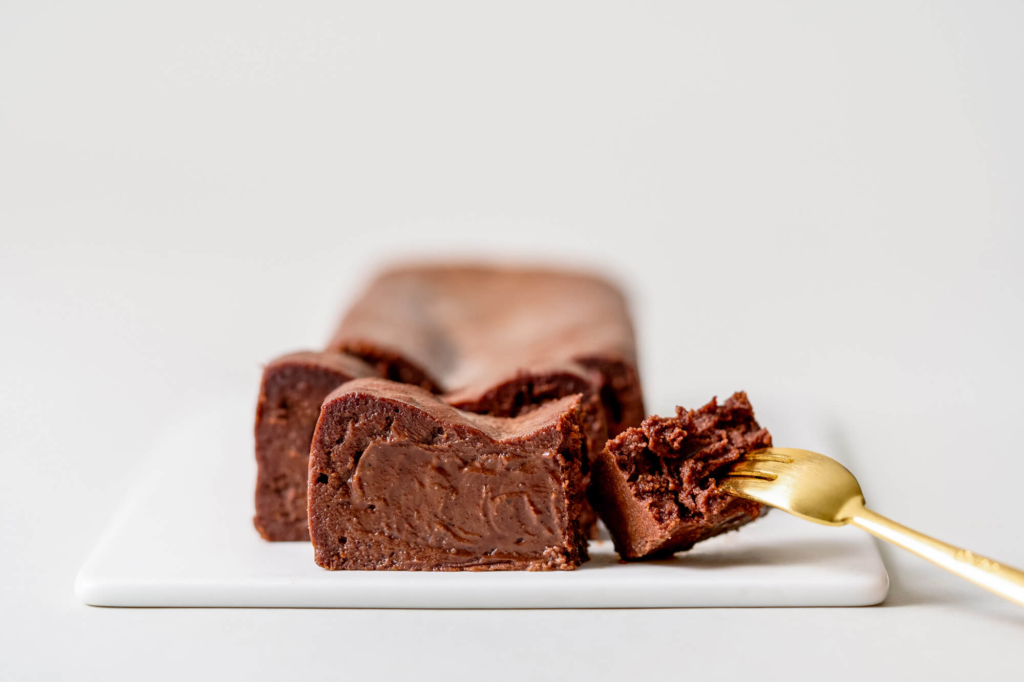
New Levels of Chocolate Appreciation
The team is innovative at finding new ways to enjoy chocolate. During Covid, the company started a subscription box, with different selections of chocolate delivered to subscribers’ homes. That is set to continue. At its Yoyogi Uehara store, it recently started alcohol pairings, introducing alcohol that fits well with chocolate, such as nihonshu, wine and nigori.
“We’ve also started bar time, twice a month on Fridays, from 7pm-10pm,” adds Yamashita.
The brand hosts chocolate-making and chocolate-tasting workshops, during which customers taste new types of chocolate alongside commentary from Minimal chocolatiers.
Another new concept is its chocolate club, Minimal Collective. Customers move up certain levels according to the amount of chocolate purchased. They then get to experience and give feedback on different products in return. The scheme was launched in July last year and members have already reached the highest level. “You have to spend ¥100,000 to get to Impact Six, and there was someone who reached it in two-three months. It was amazing. The ultimate Minimal fan,” declares Yamashita.
| Location | |
| More Info |
Website →
0363229998 |


